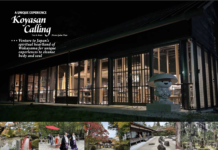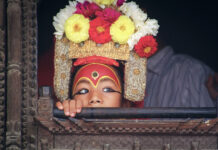Monkey fables from centuries of Asian folklore
by Khong Swee Lin
Irrepressible, mischievous, resourceful yet eternally effervescent, the tale of the monkey is one that transcends continents, creeds, customs and centuries. In Asia, the monkey in his various guises has been venerated and deified perhaps even before 500 BC.
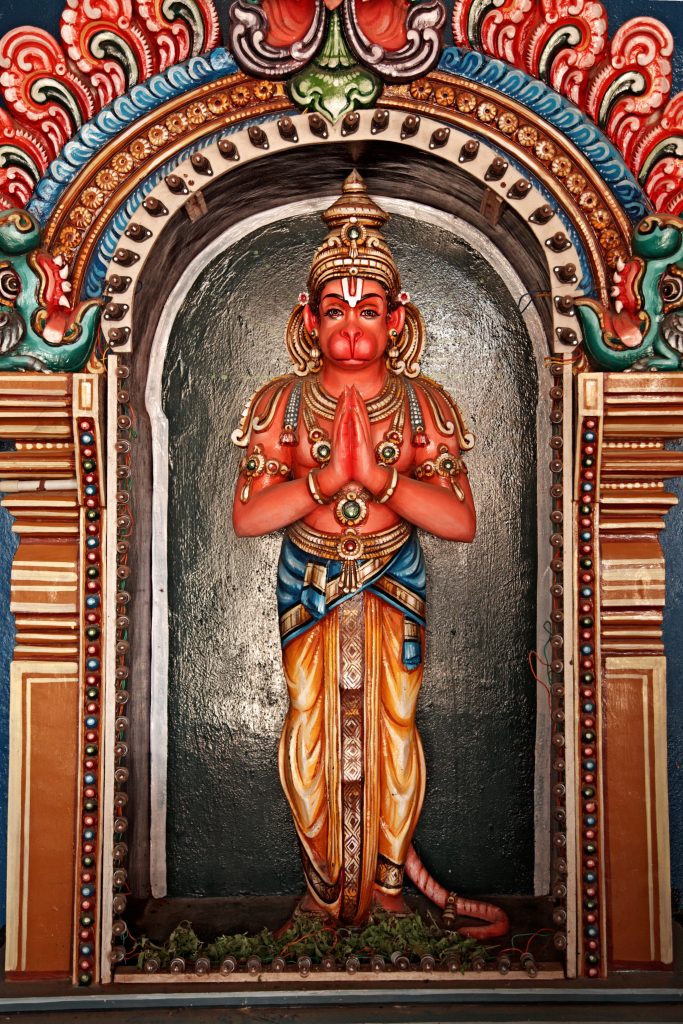
Hanuman
The Ramayana
India
Monkey warrior, Hanuman, whose tale is told in the classical Hindu epic poem the Ramayana, is an avatar or incarnation of Shiva the Destroyer and is worshipped as a god in India. Known as a Varana, the Sanskrit term for a mythological forest dweller with simian characteristics, Hanuman exemplifies justice, righteousness, bravery and loyalty.
Born of an apsara (celestial being) and the god of wind, his powers were evident even from childhood when he tried to lunge for the sun, mistaking it for a ripe mango. His role was to rescue Sita, wife of Rama the seventh avatar of Vishnu and to help him destroy Ravana, the demon king of Lanka who kidnapped her.
Connected to the winds, sun and thunder, Hanuman the commander of a monkey army is able to soar across the oceans, change his form and even lift a Himalayan mountain in his search for a herb to heal Rama’s wounded brother Lakshmana. As he couldn’t identify the particular herb he was supposed to gather, he gathered up the mountain on which the herb grew and brought it back instead. Quite practical, don’t you think?
Consequently, monkeys in India enjoy a degree of indulgence due to their association with Hanuman, although their behavior in recent years has caused the government to consider monkey control in public areas. Who indeed, can control the monkey general?
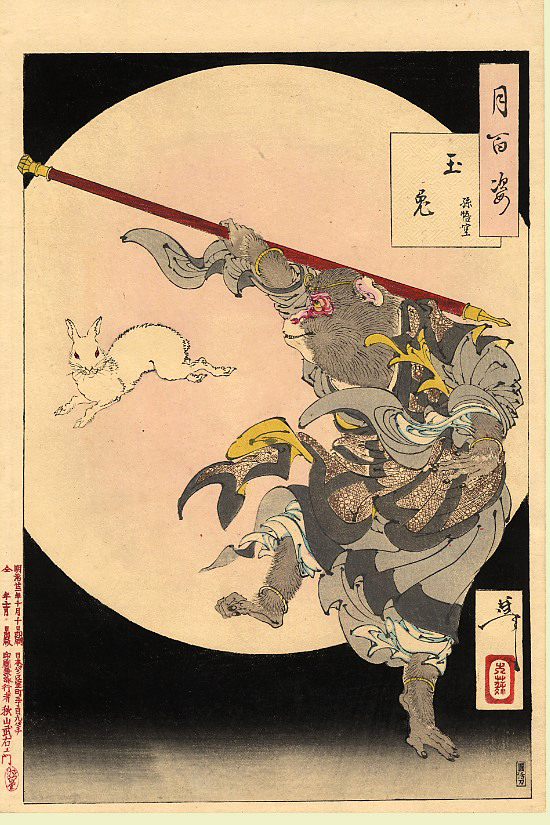
Sun Wukong
Journey to the West
China
“He… pulled out one of his hairs, put it in his mouth and chewed it into minute bits then blew them out of his mouth and said, “Transform!” and these bits were instantly changed into hundreds of small monkeys.”
– Journey to the West by Wu Cheng’en (1500-1582)
Born of stone on the Mountain of Flowers and Fruit, the indefatigable Sun Wukong named himself “The Great Sage, Equal to Heaven”. The family name Sun was bestowed on him by his first Master, Subodhi and Sun could refer to either a monkey or macaque, while Wukong meant “awakened to emptiness”. Whether Sun Wukong, The Great Sage, The Seeker of Secrets or simply Monkey King, he is one of the most endearing Chinese literary characters in Wu Cheng’en’s epic novel Journey to the West.
One of the four greats in Chinese classical literature, the novel not only incorporates Taoist, Confucian and Buddhist philosophy along with Chinese mythology and folk religion, but is, as with the Ramayana epic, an allegory. Only the Buddha could handle Sun and subsequently at the behest of Bodhisattva Guanyin, he embarked on his journey to the west to India, accompanying Tang monk Xuanzang who was on a quest to obtain the Buddhist sacred sutra texts.
While it has been thought that the monkey might have been included in the Chinese Zodiac as early as 1100 BC even prior to the arrival of Buddhism, it is interesting to note that there are similarities between Hanuman and Sun Wukong. Both are heroes in their respective epics and are of the wind element. It is the wind that gives Sun Wukong life and a monkey form, while Hanuman was born of Vayu the wind god. Both deities can change forms and travel by gigantic leaps and somersaults (Sun could cover 54,000 km in one somersault). Could Sun Wukong have been an incarnation of Hanuman?
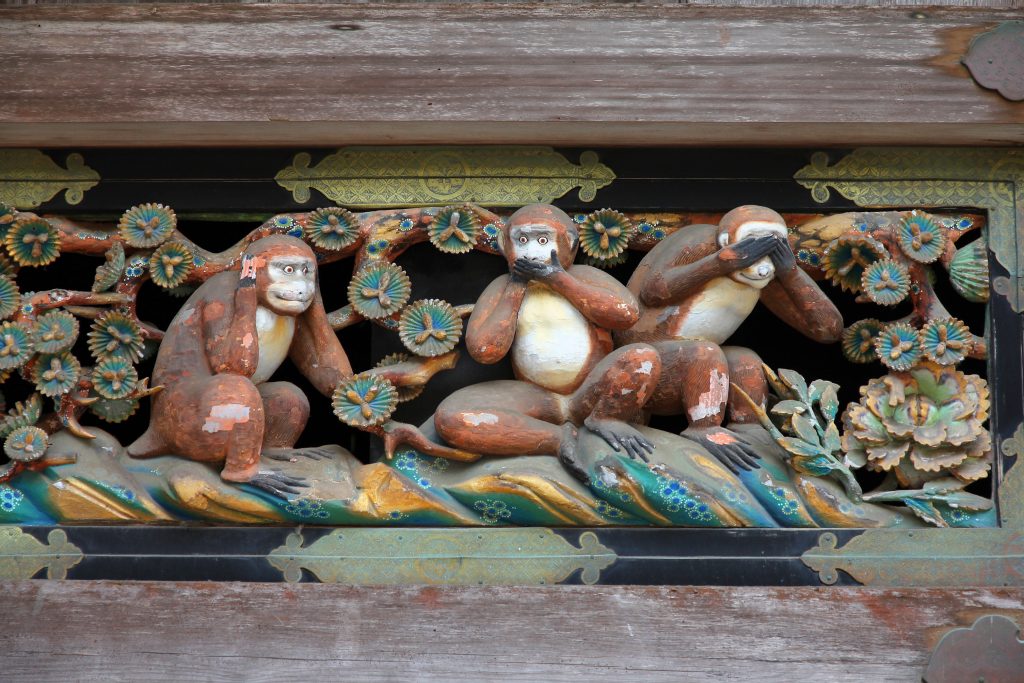
Sarutahiko Okami
Japan
The monkey and monkey deities have long been part of Japanese culture, religion and way of life. The animal was in the 8th century regarded as a mediator between humans and gods. The term “monkey” later alluded to “unscrupulous people”.
Ancient chronicles in 712 AD and 720 AD recorded the worship of Sarutahiko Okami, a Shinto deity who is revered as the god of the crossroads between heaven and earth, having a monkey-like appearance. The word “saru” refers to “simian” or “monkey”, his physical characteristics.
Sarutahiko Okami is still venerated today at one of Japan’s oldest Shinto shrines – the Tsubaki Grand Shrine in Mie Prefecture and Oasahiko Shrine in Tokushima. Being a messenger to Sanno, the mountain king, was not the only duty allotted to the Shinto Sarugami or “monkey god”, for female monkeys were believed to promote marital bliss and safe childbirth at the Hie Jinja Shrine in Tokyo. Visitors will easily spot the monkey stone statue sporting a Shinto priest’s pointed cap and draped in a red cape.
Perhaps the most popular monkey gods are the sanzuru or Three Wise Monkeys, known as mizaru, kikazaru and iwazaru (“not seeing”, “not hearing”, “not speaking”). They are carved and displayed at the stables of Toshogu Shrine in Nikko. These three friends are also representative of the Koshin faith which incorporates Taoist beliefs at the Yasaka Koshin-do Temple in Kyoto where “monkey baby” amulets are sold for good luck.
The Japanese military commander, or shogun actually designated the monkey as a deity during the appointment of Tokugawa Ieyasu (1542–1616), the founder of the last shogunate in Japan. Monkeys were bequeathed as “Guardians of Peace” in the nation, and they were also guardians of horses, kept in stables for this purpose. Amazingly, they didn’t disappoint their masters, unlike the experience of a certain Jade Emperor!
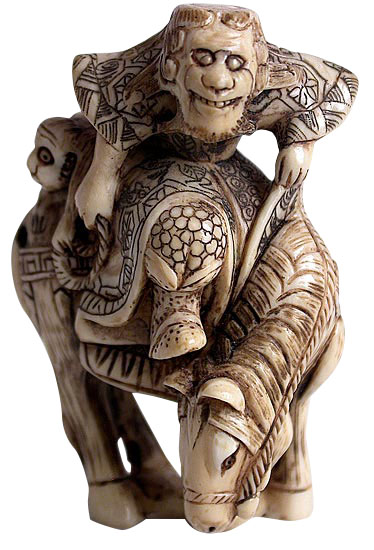
Yama Zatdaw
Bagan, Myanmar
Perhaps the tale hangs as it does, upon the seas and on ancient mariners, merchants, priests, pilgrims and voyagers who set forth on journeys along the Maritime Silk Routes transmitting literature, knowledge, language, religion and culture. Even as early as the first century, India was connected via maritime traffic to parts of Southeast Asia to ancient Burma, Siam and Java.
Thus the Ramayana epic travelled to Myanmar, becoming Yama Zatdaw or Yamayana. Within the old temples of Bagan, stone sculptures of Ramachandra once stood and Hanuman’s tale entered the country well before 1527. Wars with neighbouring Siam caused the Yama Zatdaw to be influenced by the Siamese kingdom of Ayutthaya and elements of the Thai Ramakien were incorporated.
Pure Burmese literature and music added a local twist to the epic, with U Toe’s Yama yakan (Rama’s Song, 1784), Yama Pyazat (ballet, 1789) and Kalay Yama Wuthtu (Rama’s Youth, 1800).
The ethnic Mon version Loik Samoing Ram in 1834 by Buddhist monk Uttama had Mon episodes unlike any other version. And what of Hanuman? His identity remained intact, keeping his wits about him, just as his fellow monkey did in The Monkey’s Heart, a Burmese folk tale.
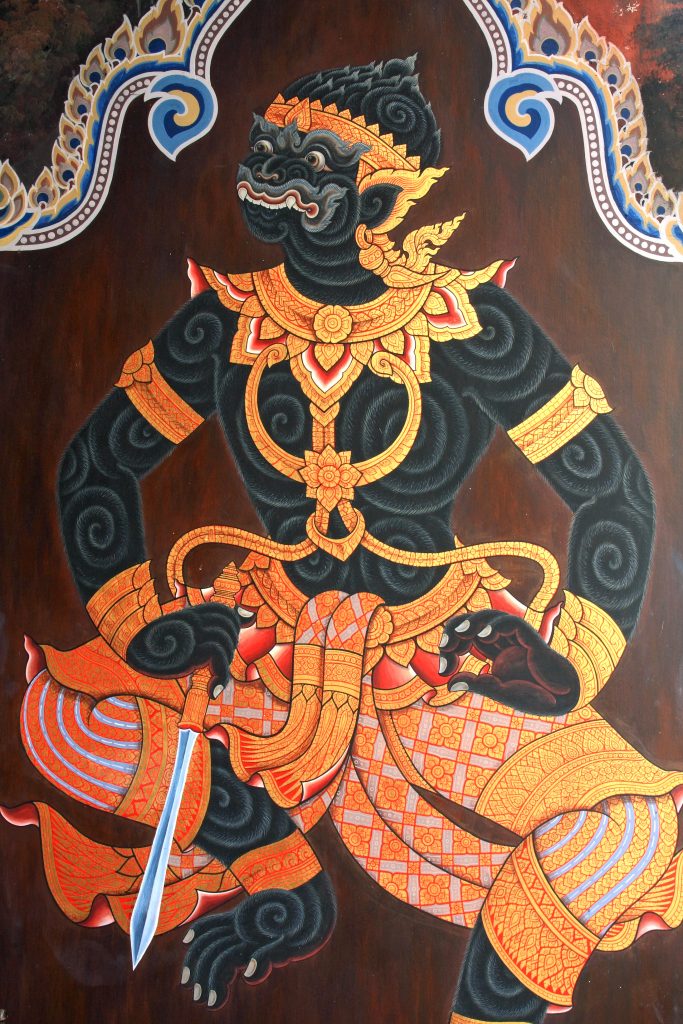
The Ramakien
Ayutthaya, Thailand
Hanuman receives more than he has bargained for when he is transported to 18th century Ayutthaya in the Ramakien (Glory of Rama), the Thai’s own version of the Ramayana epic. Although versions reached the 13th-century Sukothai kingdom and shadow puppets performed the drama, the written Thai versions were not compiled till after the fall of Ayutthaya in the 18th century.
Thereafter work began under King Rama I (1736–1809), and the walls of Wat Phra Kaew (Temple of the Emerald Buddha) were decorated with murals of the entire epic, with verses describing the murals inscribed in stone on the balcony columns. The feature of the balcony are its gates guarded by 5-metre tall giants called yakshis.
King Rama II (1766–1824) carried on working on the script, adapting it into Khon drama performed by costumed and masked dancers as well as a chorus. The Hindu mythology of the epic provided the Thai version with a creation myth and opportunity to include Thai indigenous animistic beliefs.
As expected, the names were changed. Rama became Phra Ram, Sita was Nang Sida while Ravana ended up as the unfamiliar Thotsakan. What then of Hanuman? Well, he remained his usual exuberant self retaining his name, though he had the bonus of having a larger role to play in the Ramakien – for he is now equipped with crown and armour, has crystal teeth, diamond fur and is consequently, downright flirtatious!
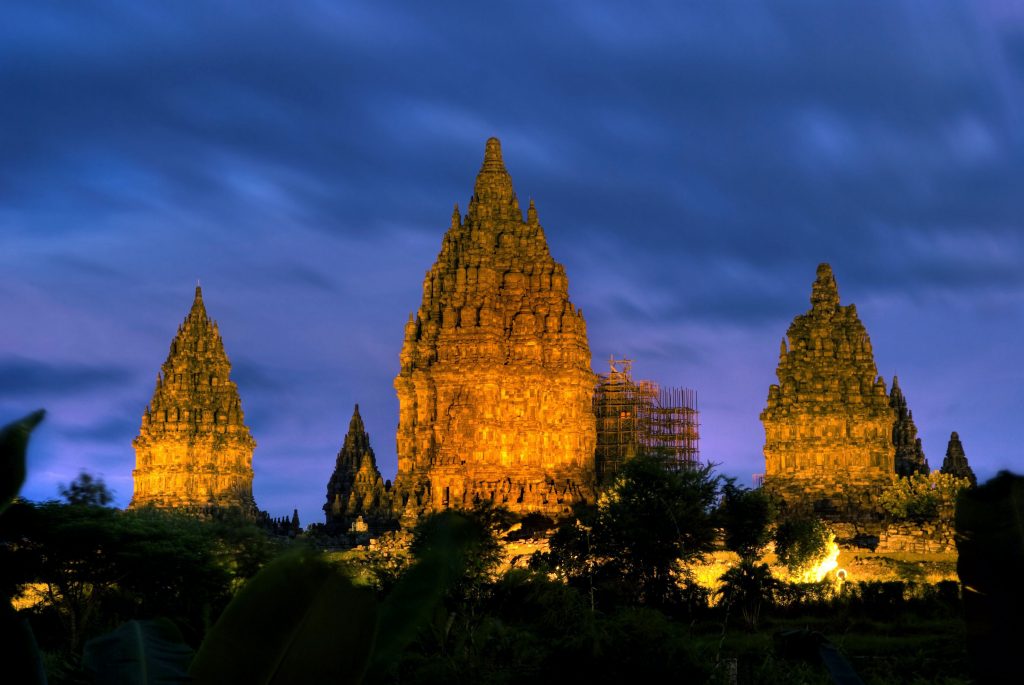
Kakawin Ramayana
Java, Indonesia
The Old Javanese version of the Ramayana appears in a poem known as the Kakawin Ramayana, written around 870 AD in Central Java. It includes the ever popular Javanese deity Semar and his three sons, all of whom appear in the wayang kulit or shadow puppet versions of the epic together with other indigenous deities and kings – making it quite different from the original Hindu epic. And as in the Thai version, our hero is equally flirtatious!
The ancient 9th century Hindu temple site of Prambanan in Central Java, roughly 18km east of Yogyakarta, was constructed by King Rakai Pikatan. Having originally about 240 temple structures, it also functioned as the royal temple of the Mataram kingdom with hundreds of monks and a sophisticated civilisation remaining in use till around 930.
Today, an archaeological park stands with stages built for the performances of the Javanese Ramayana as a Javanese ballet, held every full moon night from May to October. Now a UNESCO World Heritage Site, the galleries of the main temple dedicated to Shiva have bas-reliefs depicting the Ramayana and these continue all the way to the Brahma temple area, where depictions of Hanuman may be viewed. Hanuman in modern times, has apparently been adopted as the mascot of the Indonesian Military Intelligence – and why not, since he was the only being who could track down Sita.
For more stories and photos, check out Asian Geographic Issue 117.




